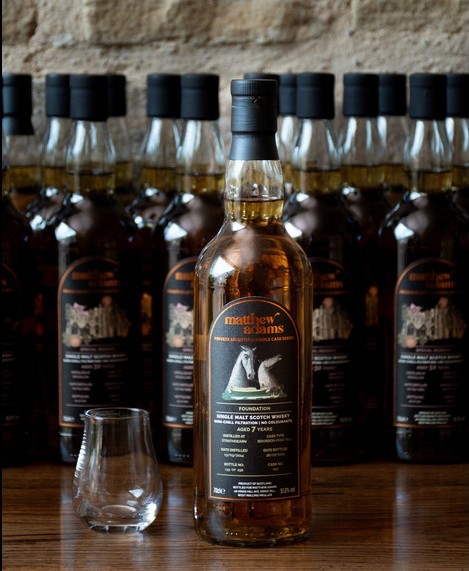The last ever piece made by Monica Young, master potter, is coming up for auction in the 20th Century Design Sale on 4th October. Measuring almost 1.5m high, the Tall Coiled Stoneware Vessel will be offered with an estimate of £2,000-3,000 (all figures exclude buyer’s premium).
News & Insights
Monica Young: Master Potter
Monica Young (1929-2004) was an extraordinary potter; self-taught, she created monumental sculptural pots from her studio in Reeth, in the Yorkshire Dales.
Born to an English father and French mother, Monica was raised for the first eleven years of her life in Paris, before the family made a dramatic escape on the last boat to leave France for England before the German invasion. She never lost her French accent.
Having settled in Twickenham, Monica was encouraged in her artistic endeavours by her family and attended Ealing School of Art before moving to Barcelona for a year to study at Escuelo Superior de Bellas Artes de San Jorge. This sojourn clearly had an impact on the young artist, as after a year completing her teacher training at Hornsey College of Art, she returned to Spain to live as a professional portrait painter for three years. Returning to the UK, she spent the following thirteen years painting portraits and book illustrations, and teaching in deprived schools in London. Never one to choose the easy option, she taught art at Wormwood Scrubs, believing art to be a humanising force for good.
Up until this point, Monica had focused on painting and drawing, having been told by tutors at art school that ‘sculpture was for boys’. However, the course of her life shifted dramatically when she was 43, thanks to a colleague who in 1972 asked her to cover a ceramics class at his school. Having never touched clay before, she joined the pupils in making coiled pots and became hooked on the feel of clay in her hands. So much so, that she gave up her teaching positions and set about a new career as a potter, initially setting up a studio in a milking shed in Sussex, owned by a member of her family.
With no training or instruction, she set about teaching herself how to pot. Fascinated by the process of coil building, she focused on this technique as it enabled her to build with no restrictions of size or form. With a lot of trial and error, experiment to find methods that worked for her, she gradually honed her technique and her pots be came larger and larger, moving beyond domestic scale to creating sculptural pieces for gardens or landscape settings.
Monica fell in love with the picturesque village of Reeth in Swaledale when visiting friends, and in 1974 she moved to the Old Butcher’s Yard, where she set up her home and studio. It was here that here creativity flourished. Living a simple life, and supplementing her modest income cleaning in a hotel, the dramatic rugged landscapes and hills looming over the village began to be reflected in her pots. Initially, Monica had created pottery of traditional shapes and forms, often inspired by Chinese pottery, just on a larger scale; however, in Reeth she began to design her own shapes with beautiful curving forms, and warm, earthy tones. Using specialist materials, her pots were made to withstand the elements.
In the 1980s she began exhibiting, selling out of stock, building a dedicated following of clients and she was accepted into the Craft Potter’s association. She was now making extraordinary coiled pots, as large as tall as an adult, which was incredibly difficult. Working instinctively, she created harmonious, abstract forms, almost reminiscent of fabric the way they folded and curved, but with touches of angularity to give the pots a ‘backbone’, a visual strength.
Given the technicality of producing such pieces, Monica drafted her plans on graph paper, and each pot took six to eight weeks to complete. Whilst her output was relatively modest, her legacy lives on in these striking pots, which can now be found in public and private collections around the world. Amongst a host of accolades, Monica was gold medallist at the International Craft Exhibition in Munich in 2002.
< Back to News

3rd December 2025, 10:30
Plan your visit to our Leyburn Head Office and Salerooms, or the Harrogate Office
Get your antiques and collectables valued by our team of specialists.
















